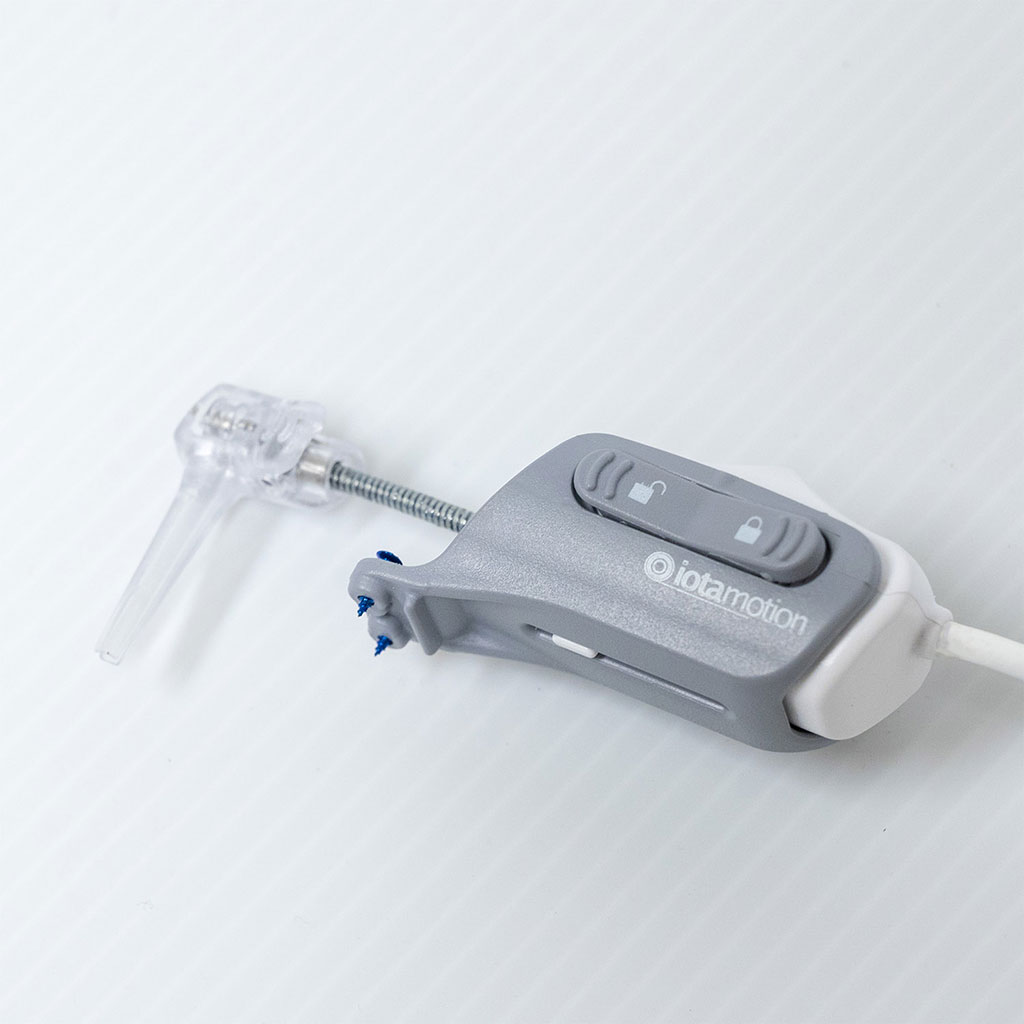Robotic System Facilitates Cochlear Implant Insertion
By HospiMedica International staff writers
Posted on 20 Oct 2021
New cochlear implant insertion technology aids surgeons in placement of electrode arrays by controlling insertion speed. Posted on 20 Oct 2021
The iotaMotion (Iowa City, USA) iotaSOFT Insertion System is a small, thumb-sized, open platform robotic technology compatible with a variety of implants, which fits seamlessly into existing surgical workflows. The bone-mounted robotic device aids the surgeon during insertion of the implant electrode array by reducing insertion variability and undesirable forces. However, the surgeon still controls the precise motion capabilities of the robotic-assisted insertion, using technical skills, training, and experience.

Image: The iotaSOFT cochlear implant insertion system (Photo courtesy of iotaMotion)
According to iotaMotion, when inserting cochlear implants manually, the amount of force used can spike as the electrode is pushed through the final millimeters across the sensitive areas of the ear; as a result, an estimated 15-50% of all people who receive a cochlear implant have reported additional losses of their natural hearing. By slowing down the speed of the procedure and giving the surgeon added control, iotaSOFT aims to limit the amount of damage caused to the delicate cochlea by the surgery itself, helping to maintain the patient’s residual hearing.
“Historically, cochlear implant electrode arrays have been placed solely by hand with forceps and other manual instrumentation. With the advent of robotic-assisted systems like the iotaSOFT, we will now have the ability to place the electrode into the delicate, tiny structures of the cochlea with the added precision and stability that robotic assistance provides,” said Marlan Hansen, MD, medical Director iotaMotion. “There are clear opportunities to improve outcomes, optimize preservation of existing function, and support consistent results for surgeons and patients in the US and around the world.”
In a normal ear, sound vibrations in the air lead to resonant vibrations of the basilar membrane inside the cochlea. The movement of hair cells, located all along the basilar membrane, creates an electrical disturbance that can be picked up by the surrounding nerve cells, allowing the brain to interpret the nerve activity and determine what sound frequency is being heard. The cochlear implant bypasses the hair cells and stimulates the cochlear nerves directly using electrical impulses. This allows the brain to interpret the frequency of sound as it would if the hair cells of the basilar membrane were functioning properly.
Related Links:
iotaMotion













.jpg)
